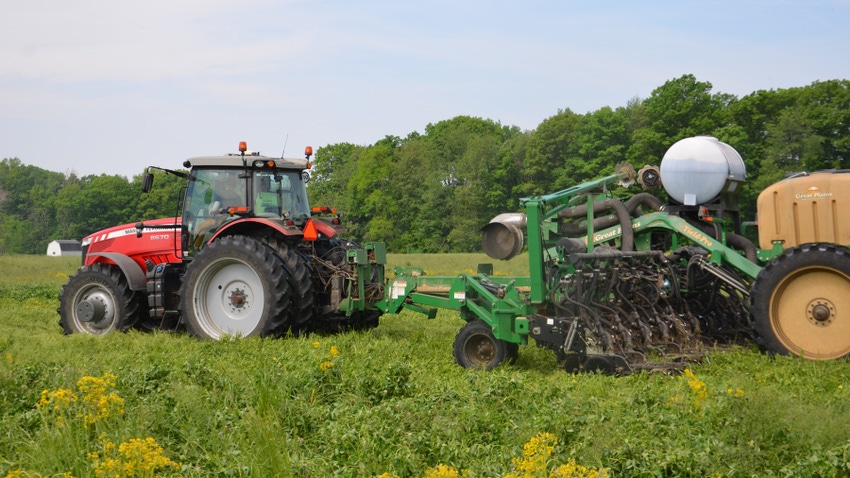March 30, 2023

Plant ’23 is upon us. The Indiana winter was relatively mild. Planters across the state are being tuned up, and soon it will be time to go to the field and put the crop in.
That means it’s a good time to review important topics in a no-till and cover crop system to ensure your planting season is successful. You have one shot to get that excellent stand of corn or soybeans you want.
Here are three key things to make sure you have right before you plant:
1. Planter settings. You are likely in the final stages of making sure your planter is in top condition. You want all bushings and bearings on each unit not to have any play in them. If they are loose or wobbly, your seed depth will not be uniform.
Double-disk openers are very important when planting no-till, especially into cover crops. They will need replacing more often once you move into a heavy residue system. Make sure they are not too worn and are coming together in the front to correctly cut the seed slot. They need to make that perfect V in the most difficult conditions for adequate seed placement.
2. Available nitrogen. Adequate nitrogen availability for newly planted corn into a cover crop is also important, especially after a cover crop such as cereal rye. It has a very high carbon-to-nitrogen ratio. Once cereal rye gets over 15 inches tall, the carbon level starts to increase dramatically.
If you terminate high-carbon rye, microbes in the soil start using available nitrogen to break down rye residue. Remember the rule: Bugs eat first! You could be planting corn into a nitrogen-starved environment.
It’s important to have the capability to apply nitrogen as you plant so your corn will have available nitrogen early. Be prepared to sidedress additional nitrogen while corn is still small to ensure your crop never lacks for nitrogen.
3. Residue management. Another potential issue with early termination of high-carbon cover crops is development of a mat of residue. This could prevent the soil from drying out and warming up. A rule of thumb with cereal rye ahead of corn or soybeans is to either terminate before 15 inches of growth or plant green.
High-carbon cereal rye residue does a great job of shading the soil and retaining soil moisture. While beneficial after the crop is planted, it is an issue prior to planting. A planter will generally plant easier through standing cereal rye over 15 inches tall, so plan to plant and then terminate after planting into mature rye.
This applies whether termination will be done through herbicides or mechanically by crimping. Soybeans can tolerate a roller-crimper running over them up to 3 to 4 inches tall without damage. Rye planted ahead of corn will need to be crimped prior to corn emergence.
A successful harvest ’23 begins with an effective plant ’23, especially in high-residue, cover crop and no-till systems. Planning and preparation go a long way toward a successful planting season.
Donovan is a district conservationist with the Natural Resources Conservation Service. He writes on behalf of the Indiana Conservation Partnership.
Read more about:
No tillAbout the Author(s)
You May Also Like






